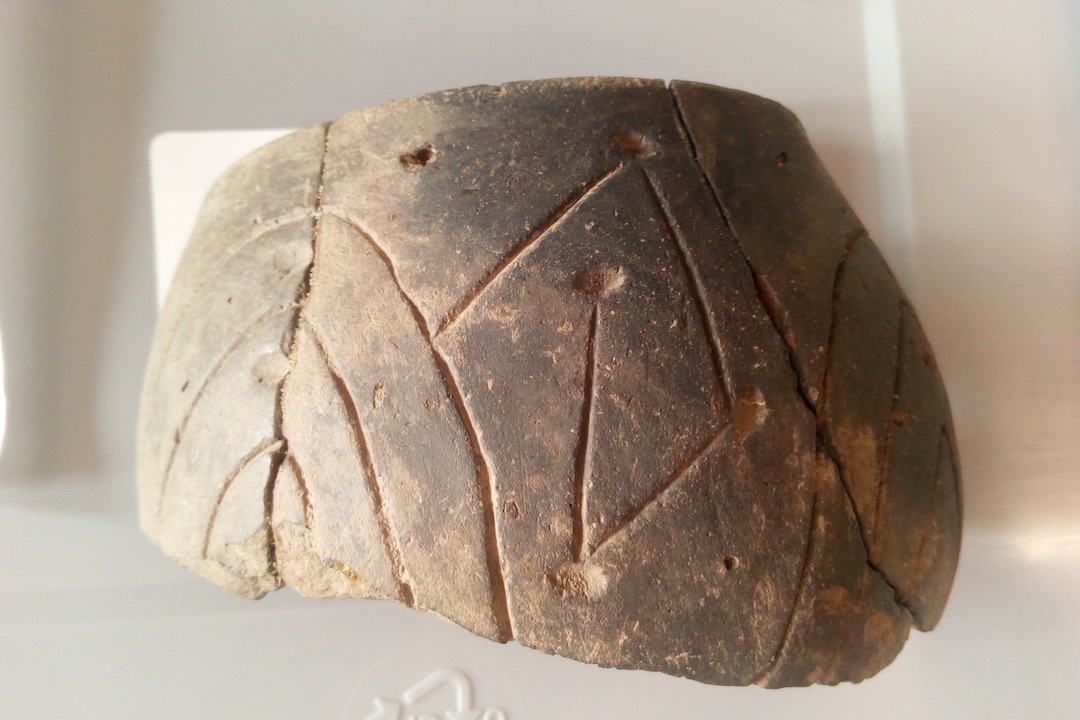Create a free profile to get unlimited access to exclusive videos, sweepstakes, and more!
Got ancient milk? Scientists find world’s oldest milk bottles in central Europe
There are an estimated 1.5 billion cows in farms all over the world. This is why.

When we imagine a farm, we often think about cows, pigs, and chickens all living together in artificial harmony. Maybe there’s a few goats or sheep and a rogue alpaca or two. The farm is the sort of place where a pig might be adopted by a border collie, win a sheep-herding contest, and earn the love and respect of James Cromwell. The picturesque tableau presented in Babe is only possible because of thousands of years of human ingenuity, bending the genomes of plants and animals to our will.
Modern farming traces its roots back to the Neolithic, a period of time from 4,500 to 10,000 years ago, when humans were transitioning from hunter-gatherer societies to more sedentary ones, thanks in large part to agriculture. Recently, Dr. Emmanuelle Casanova from the School of Chemistry at the University of Bristol, and colleagues, discovered the origin of one part of that agricultural story. According to a new study published in Proceedings of the National Academy of Sciences, researchers have uncovered the oldest-known milk bottles at various neolithic sites across central Europe.
“They are neolithic ceramics we found all across central Europe and they come from the same cultural group called the Linearbandkeramic or LBK for short. They emerged in southeast Europe in Hungary and spread towards Austria, Germany, France, the Netherlands, and Poland. They were all over Europe around the sixth millennium BC,” Casanova told SYFY WIRE.
The study was part of a project called NeoMilk, which seeks to explore the spread of cattle-based agriculture among LBK populations. According to Casanova, they investigated roughly 3,000 vessels from LBK sites all over central Europe. They analyzed the interior surface of the vessels looking for lingering hints of what the vessels once contained.
“We used a method called lipid residual analysis to look at residuals preserved within the vessel walls. When we find molecular signatures that are typical of animal fat, we do stable carbon isotope analysis to say if it’s from dairy residues or from the adipose of the animals,” Casanova said.
That analysis confirmed the presence of molecules from milk at roughly two thirds of all LBK sites and the diversity of vessels suggests it may have been used in various ways which are familiar even today. Some vessels had features which might have made them good for making cheese or storing butter. Others appeared to be cooking pots. Moreover, that variation was different from site to site, as populations experimented with a new food resource.
At present, it’s not wholly clear which animal was being exploited for their milk, but the available evidence suggests the first milks came from cattle, the same as it largely does today. “Stable carbon isotope measurements are not species specific; we can only say it was from a ruminant animal. When we look at the faunal remains, between 60% and 80% are cattle, depending on the site,” Casanova said.
Interestingly, these early experiments in consuming non-human milk may have been a recipe for gastrointestinal distress. In most mammals, infants express lactase in order to break down lactose into more easily digestible molecules, but lactase expression declines after infancy. Humans, however, have developed lactase persistence, which allows us to continue consuming and digesting milk into adulthood. During the neolithic, however, that wasn’t the case. These milk bottles date back to approximately 7,400 years ago, centuries before we would develop a mutation which makes it easier to consume milk. In fact, that mutation is so new that even today, large portions of the global population don’t exhibit lactase persistence.
“At the time, it would not be visible in the genetics of the population. It’s visible way later. The consumption of milk probably helped this gene to develop. They were probably exploiting it before the ability to digest milk began. People were exploiting milk in different products, we don’t know if it was butter or cheese or things with lower amounts of lactose that would make it more digestible,” Casanova said.
It was a bold move by our neolithic ancestors. One can imagine countless uncomfortable evenings squatting at the edge of the firelight, all so some unknowable descendant thousands of years in the future could shove their mouth full of shredded cheese bathed in the light of an open refrigerator door. We thank them for their sacrifice.


























